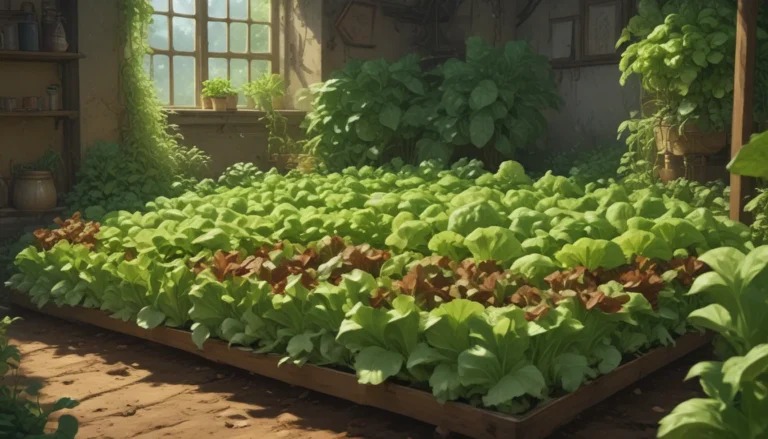Understanding and Managing Common Diseases in Bergenia Plants

Are you a proud owner of beautiful Bergenia plants? If so, you’ll be pleased to know that these plants are known for their natural resistance to fungi. However, this doesn’t mean they are immune to diseases. In fact, even plants that are resistant to most diseases can still be vulnerable to specialized pathogens.
In this comprehensive guide, we will delve into the primary diseases that may affect Bergenia plants, helping you to recognize the symptoms and effectively treat them.
Overview of Common Bergenia Diseases
- Anthracnose (Fungal Leaf Spots)
- Identifying the Main Pathogen
- Symptoms and Treatment
- Sanitation
- Fungicides
- Biofungicides
Anthracnose (Fungal Leaf Spots)
When it comes to Bergenia plants, one of the most common diseases manifests as spots on the leaves. In some rare cases, these plants can fall victim to crown or rhizome rot. Let’s explore this disease in detail.
Identifying the Main Pathogen
Scientific studies have revealed that anthracnose (Colletotrichum spp.) is the primary pathogen affecting Bergenia plants. This fungus is known to infect a wide range of hosts, causing symptoms such as crown and root rot, leaf loss, blossom blight, and fruit rot.
A study by German plant pathologists identified C. acutatum as the source of leaf spot infections on Bergenia plants in various regions. This species is widespread and can infect not only Bergenia plants but also strawberries, walnuts, tomatoes, apples, olives, camellias, and rhododendrons, among others.
With the fungi that attack Bergenia plants being prevalent in various parts of the world, it’s essential to be vigilant and proactive in disease management.
Symptoms and Treatment
The initial symptoms of anthracnose include dark lesions on leaves or stems, with the fungus producing pink spores in the lesions as it thrives. To effectively manage this disease:
- Sanitation: Remove all infected leaves and stems and dispose of them properly. Clean pruning tools with rubbing alcohol or bleach to prevent further spread.
- Fungicides: While commercial growers have access to potent fungicides, home gardeners can use products like Bonide Captan Concentrated Powder Fungicide or ZeroTol HC. Regular application is essential.
- Biofungicides: Consider using biofungicides like CEASE Biological Fungicide, which contains effective bacterial strains to combat fungal infections. Prompt treatment is crucial for best results.
By promptly identifying and treating anthracnose, you can prevent its spread and protect your Bergenia plants from serious damage.
Additional Types of Leaf Spots
While anthracnose is the most common leaf spot disease in Bergenia plants, there are other less prevalent fungal diseases that may affect them. These include Colletotrichum from lupine plants, C. lillacola causing infections in Bergenia ligulata, and Pilidium concavum leading to tan-brown rot in Bergenia plants.
Crown Rot/Rhizome Rot
Another serious condition that can affect Bergenia plants is crown rot, also known as rhizome rot. This disease, although rare in Bergenia plants, can lead to the collapse and death of infected plants. Here’s how you can manage this issue:
- Avoid mulching over the crowns: Preventing excess moisture around the plant’s base can help reduce the risk of crown rot.
- Early identification and removal of infected plants: Once crown rot sets in, it is often fatal. Promptly removing affected plants can prevent further spread.
Crown rot can be caused by various pathogens, including the water mold Phytophthora. While identifying the exact source may require lab tests, the priority should be on preventive measures and early intervention.
Bergenia Resists Most Infections
Despite the potential for diseases like anthracnose and crown rot, Bergenia plants generally exhibit resistance to most infections. By maintaining good gardening practices and promptly addressing any signs of disease, you can enjoy thriving Bergenia plants in your garden for years to come.
Have you encountered diseases on your Bergenia plants? Share your experiences and tips in the comments below.





